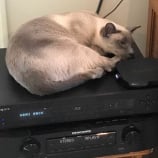-
Still no success so far. Searched a bit and found this paper: https://www.ieee-security.org/TC/SP2019/papers/310.pdf Currently Crucial NVMe does not support Windows hardware encryption of bitlocker. I think the paper affected to this decision at least some degree. https://www.crucial.com/support/articles-faq-ssd/hardware-encryption-nvme-ssds Maybe this paper is also related to current situation of Samsung NVMe (it is speculation, there is no definitive article found) I learned, SSDs that supports encryption always encrypt stored data: When encryption is OFF, data is encrypted with default encryption key, therefore there is no performance penalty when hardware encryption is enabled. In theory, hardware encryption is more secure than software encryption when it is implemented properly, because encryption key is not exist on main memory. I hope this hardware encryption issue will be sorted out and enabling hardware encryption becomes more easier in the near future...
-

Major security flaw found in Intel processors
yamamoto2002 replied to christopher3393's topic in General Forum
Here it is updated list. Spectre v2 CVE-2024-2201 should be added soon on this list. End of servicing lifetime processors are not listed (computer should be updated to supported processor to get security fix service from Intel) https://github.com/intel/Intel-affected-processor-list/blob/main/Intel_affected_processor_list.csv From my understandings, “software mitigation” adds extra synchronization wait instruction command after every specific machine instruction call and “microcode update (MCU) fix” does it by CPU itself. -
It is pure technical interest, how to enable hardware encryption, how software disk encryption affect to compute performance and how much the impact is alleviated by hardware encryption. It is also preliminary exercise, potentially Microsoft mandates disk encryption in the future releases. About enabling hardware encryption, it seems it is more difficult than I first thought. Information around this technology is sketchy. I'm considering to get different SSD to retry. About performance impact of software encryption, it is rather obvious, software disk encryption is not light task for CPU. Benchmark shows higher CPU load and slower I/O performance, I do not believe some people on Internet say software disk encryption is light task for modern CPU.
-
Anyone tried to enable BitLocker hardware encryption on OS system drive? On recent months, I tried to enable BitLocker hardware encryption on Samsung 990 Pro, Samsung 980 Pro and Samsung 970 Pro with several computers, with no success so far. With some googling, finally MSINFO32 shows the computer meets device encryption prerequisites with Intel NUC 12DCMi9 computer and Samsung 990 Pro. But manage-bde -on -fet hardware returns ERROR: An error occurred (code 0x803100b2): The drive specified does not support hardware-based encryption. And Samsung Magician shows this device do not support Encrypted Drive feature. Enable Encrypted drive and perform secure erase Then clean install Windows 11 Pro It seems the drive does not support Encrypted Drive feature.
-
USB and General purpose IO pins (GPIO) on Raspberry Pi 4 is connected directly to SoC, while those of Raspberry Pi 5 is connected to RP1 IO controller (South bridge) connected to SoC. Potentially it may introduces some stability problems https://www.raspberrypi.com/news/rp1-the-silicon-controlling-raspberry-pi-5-i-o-designed-here-at-raspberry-pi/
-
According to 3com 4400 getting started manual page 89, This is FCC Class A commercial/industrial equipment. It is not designed to be used in home wherein RF-sensitive devices (audio equipment!) may be malfunctioned by its radio frequency noise emissions
-

ACROLINK 8N-A2080 Performante XLR/XLR Interconnect
yamamoto2002 replied to Gato's topic in Analog Components
WO2005/073434 is their patent about their 8N copper manufacturing process. According to the patent document, 8N copper is pretty costly to make but it is desirable material to produce LSI, it is softer and easily worked, stable to form thin metal film by sputter deposition. It is indeed technological marvel. Audio application is briefly mentioned, but there is no explanation why 8N is better than, say 7N, for audio use. It seems Acrolink has stopped selling 8N copper audio cables. -
On several years ago of Sound & Recording Magazine (monthly magazine published in Japan) there is the article about art of mastering for high-res. They said something like "it is better to hump some audible high frequency for high-res master, and apply more maximizer for CD master" so maybe answer is no.
-

Atlas OS, low latency OS for sound quality
yamamoto2002 replied to Brian8591's topic in General Forum
See this document https://learn.microsoft.com/en-us/windows-hardware/drivers/audio/low-latency-audio (I'm not sure if Windows can wake up user thread with 1ms granularity reliably.) In most cases there is no sonic difference when latency value (PCM buffer size) is changed. Sometimes more power consumption means more noise (electronically and acoustically). Sometimes noise pitch is changed when power consumption is increased, it is YMMV. My opinion is, larger buffer is better with music listening scenario, because of less occurrence of sound stuttering due to buffer underruns. As Archimago-san said, low-latency audio is absolute necessary for some usage scenario such as gaming application or realtime monitoring of recorded sound, therefore low-latency audio is introduced on Windows 10, not to improve music listening experience -
FM acoustics is famous for their transistor matching by measuring and handpicking, their circuit design relies on the precisely matched transistor. Generally it is hard to repair to their originally intended spec, IMO it is better to sell it as is unmolested
-

iFi audio DC Blocker+ eliminates transformer rumble noise
yamamoto2002 replied to yamamoto2002's topic in General Forum
I measured Humidifier current draw with Picoscope 4444 and CATIII probe and found it is half wave rectifier when it is operated in low power mode! It definitely causes DC offset to rumble audio transformers -
I don't know if audio streaming solution exists, but, motorized analog volume attenuator provides “bitperfect (because it is analog domain process)” volume control. There is the Windows audio programming interface“IAudioEndpointVolume” to control hardware endpoint volume https://learn.microsoft.com/en-us/windows/win32/coreaudio/endpoint-volume-controls Some preamplifier/integrated amplifier provides IR remote commander that rotates volume knob. I think it is nice for preamplifier to add those functionality, because I think volume atenuation is amplifier job not DAC job. This technology is used to reproduce exact mixer operating status on past mixing project
-

iFi audio DC Blocker+ eliminates transformer rumble noise
yamamoto2002 replied to yamamoto2002's topic in General Forum
When DC blocker only connects to Humidifier, it is somewhat effective, buzz noise from the transformer that connected to wall receptacle becomes very small, but slight buzzing remains and the noise level fluctuates. Maybe other home appliances in my house or neighbor's cause the transformer buzz. From the observation, in my case, the transformer buzz problem is solved when all the audio equipment connected to one DC blocker+, DC blocker+ is rated 10A, so it is OK for my setup, but it is YMMV The humidifier is not high-end product it is pretty powerful and I like it. -
This winter, I purchased a humidifier. It causes mechanical rumble from my isolation transformer , Genelec 8030A, and 7350A active speakers. With iFi audio DC Blocker+, this noise is reduced by 20dB. I'm not salesperson of iFi Humidifier. I guess this device uses triac. Genelec 8030A active speaker. A toroidal transformer is used to its power circuit, that emits acoustic noise when humidifier is working. My isolation transformer, it eliminates ground loop buzz noise. But, when humidifier is working, this transformer rumbles and makes very annoying noise. iFi audio DC Blocker+ and power tap Experiment Noise from the isolation transformer is recorded with AKG C414 microphone, placed about 50cm distance with microphone stand. The isolation transformer is powered from Wall receptacle, or Power tap with iFi DC Blocker+ Humidifier is Switched on, or Switched off Record and compare acoustic noise from the isolation transformer. Results Transformer powered from the wall receptacle, Humidifier ON : -16.34 dBFS Transformer powered from iFi DC Blocker+, Humidifier ON : -37.21 dBFS Transformer powered from the wall receptacle, Humidifier OFF : -39.71 dBFS Everything switched off : -33.83 dBFS There is a significant improvement of noise level about 20dB with iFi DC Blocker+. It is not anechoic chamber test, run-to-run variations on the noise levels is something like 6dB or so. Isolation transformer connected to wall receptacle, Humidifier working. Transformer rumbling noise is heard. Transformer_50cm_and_Humidifier.flac Isolation transformer connected to iFi DC Blocker+, Humidifier working. Transformer rumbling stopped. Transformer_50cm_with_IfiDCBlockerPlus_and_Humidifier.flac Isolation transformer connected to wall receptacle, Humidifier switched off. Transformer rumbling stopped. Transformer_50cm_d.flac Everything is switched off. Everything_Disconnected.flac























